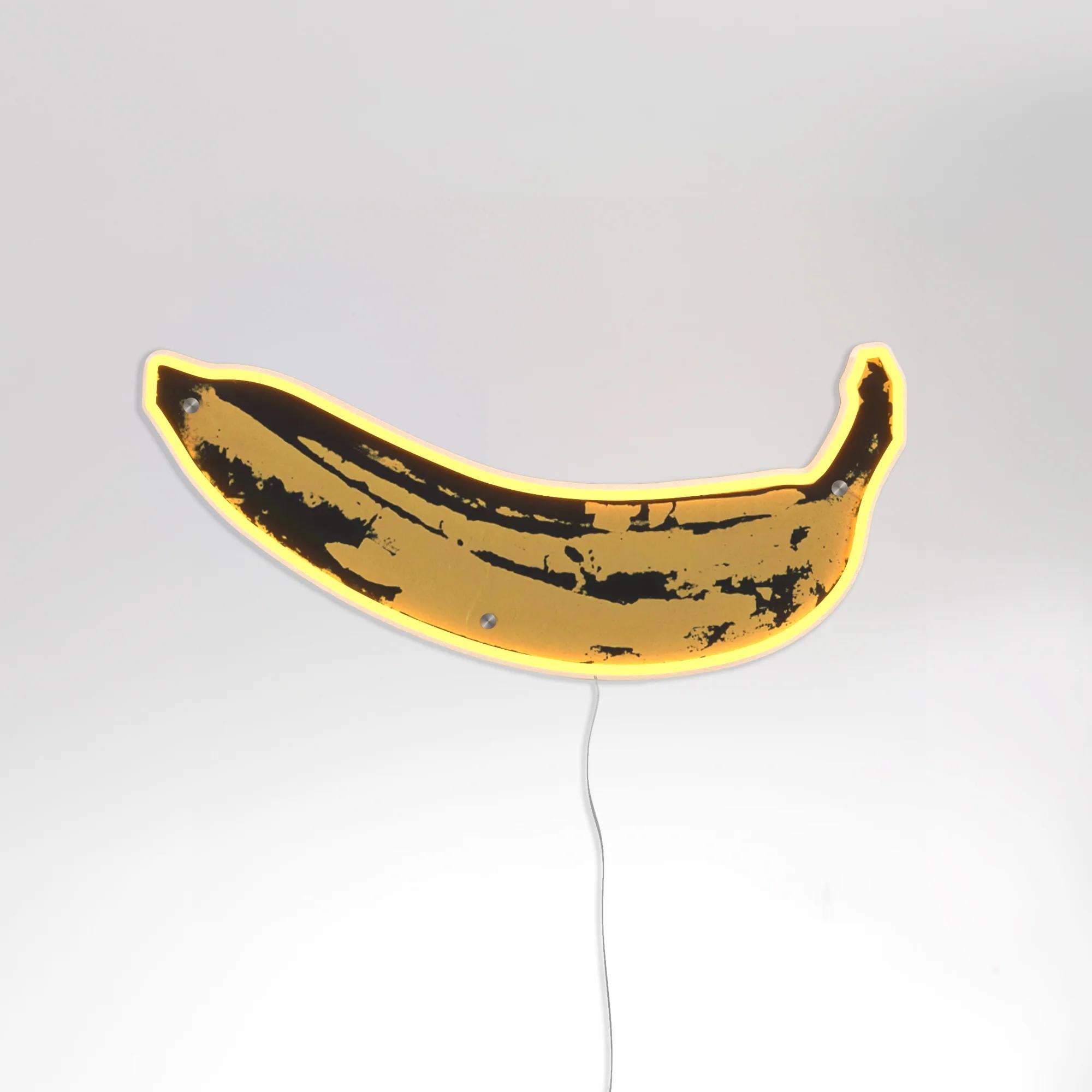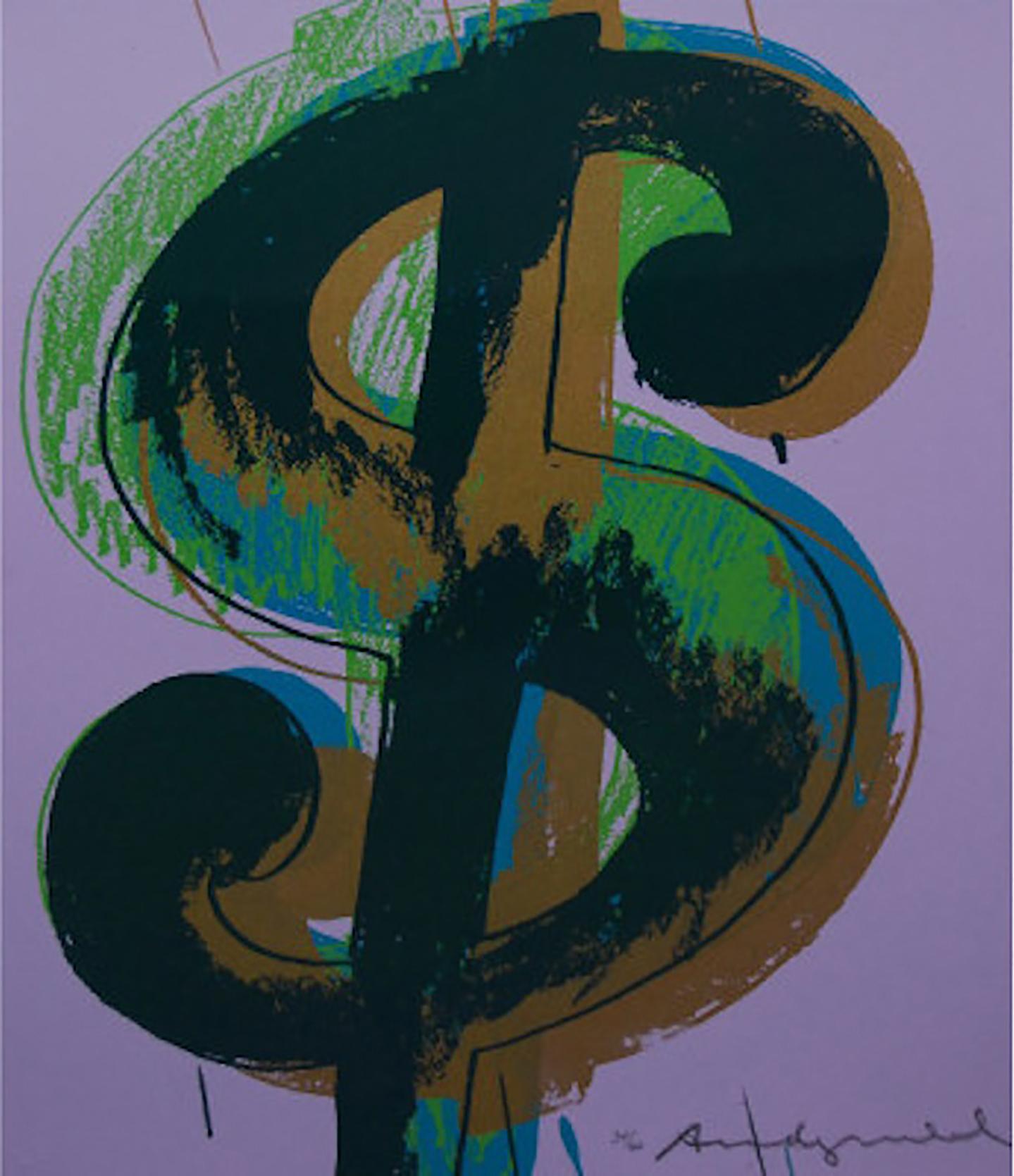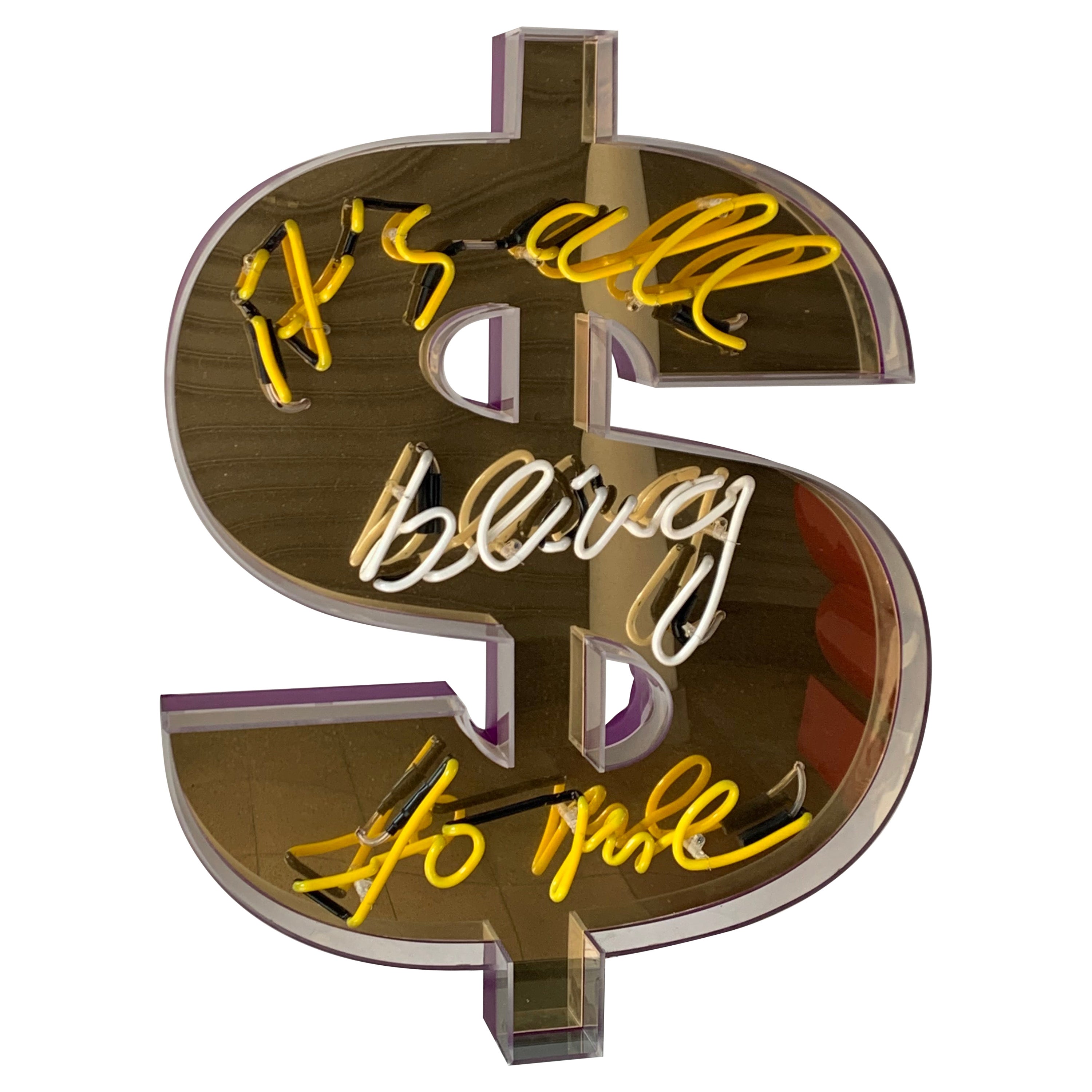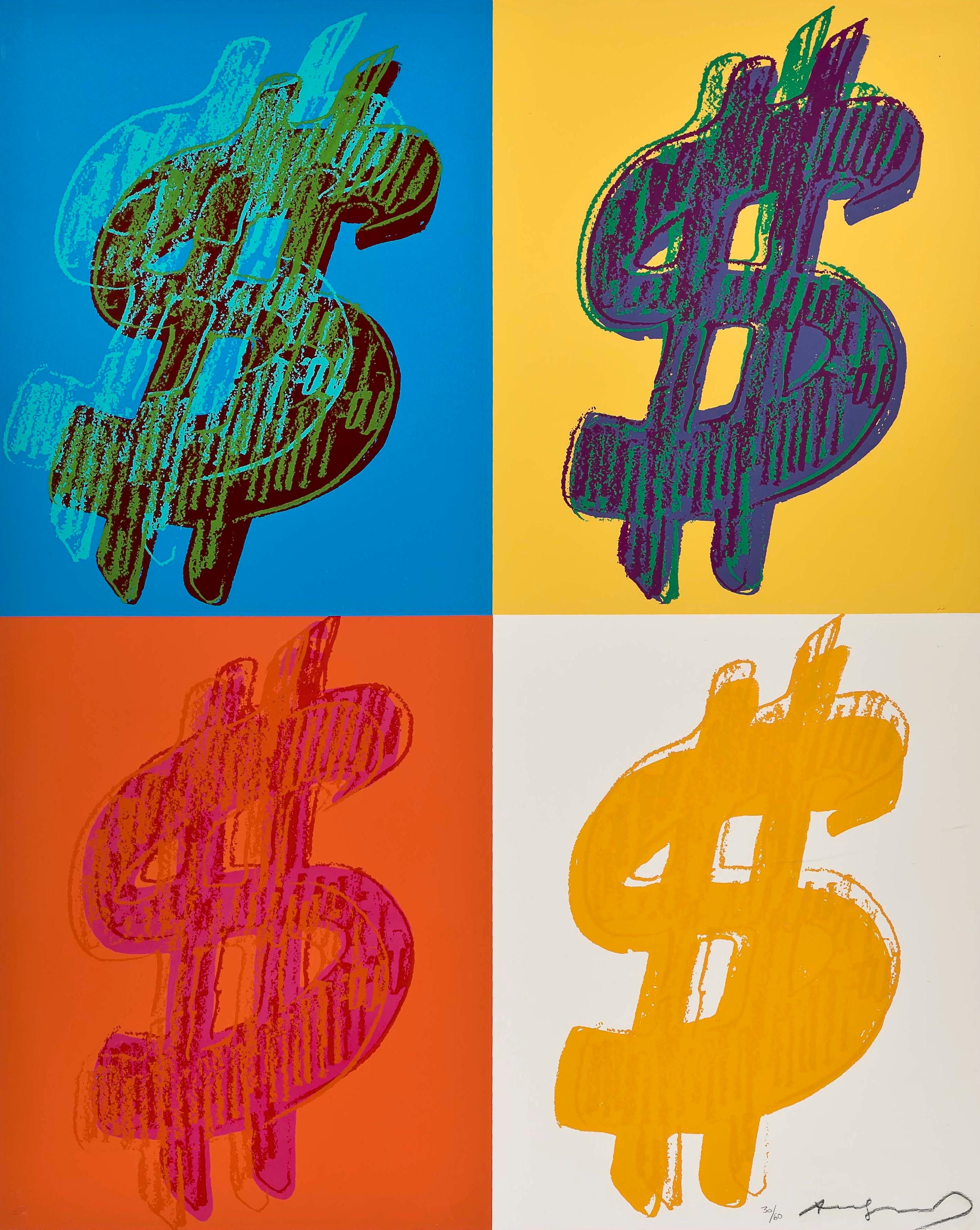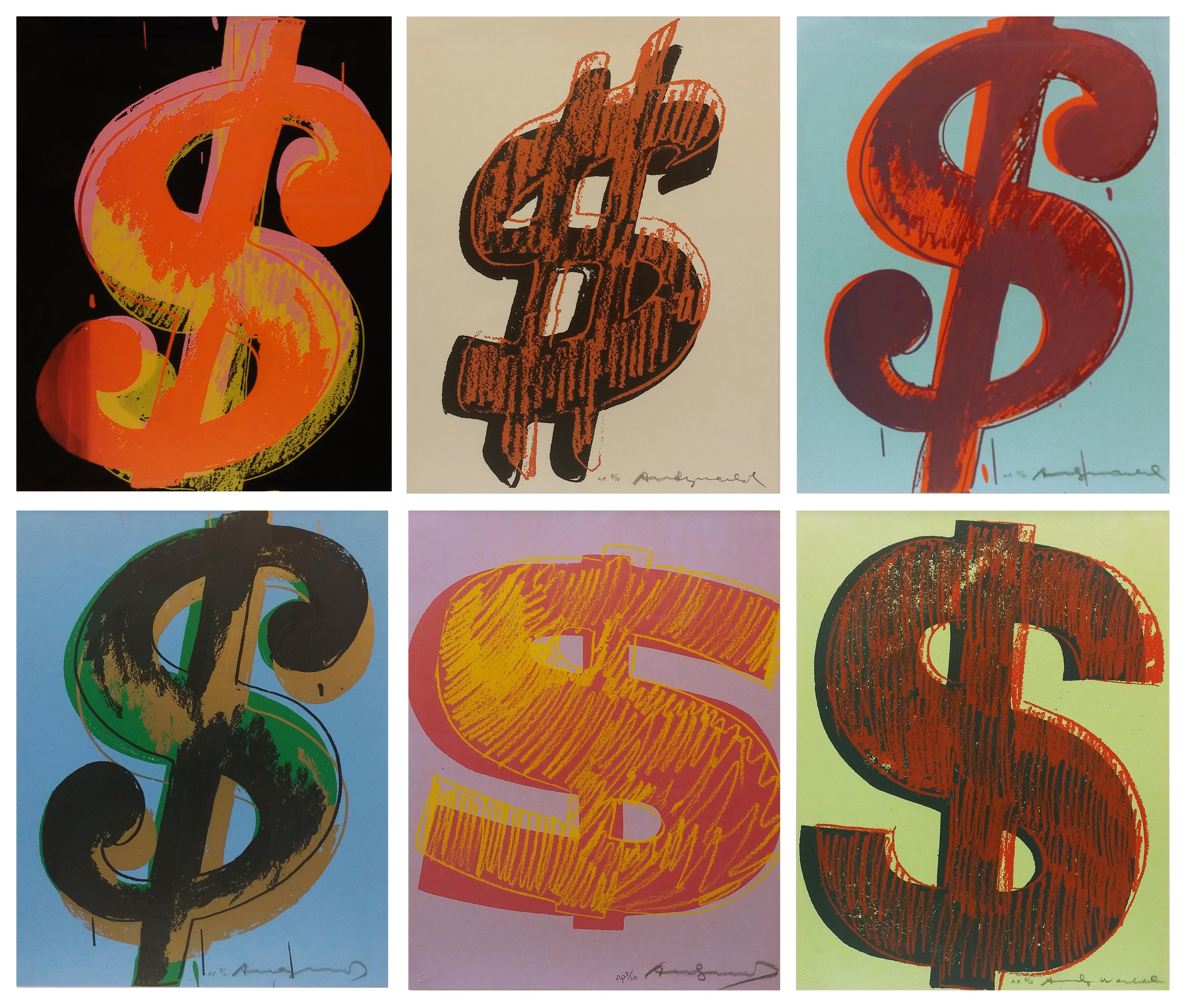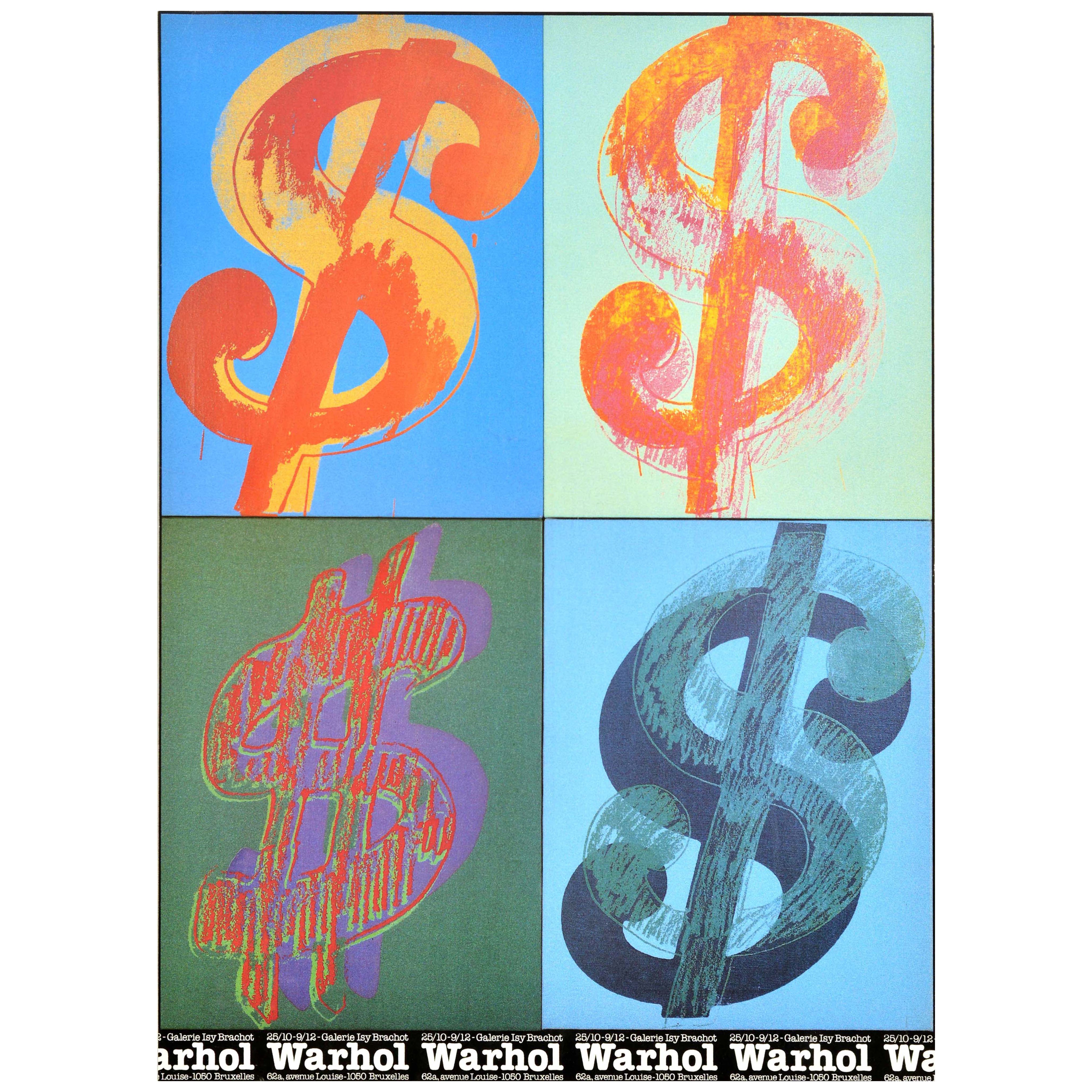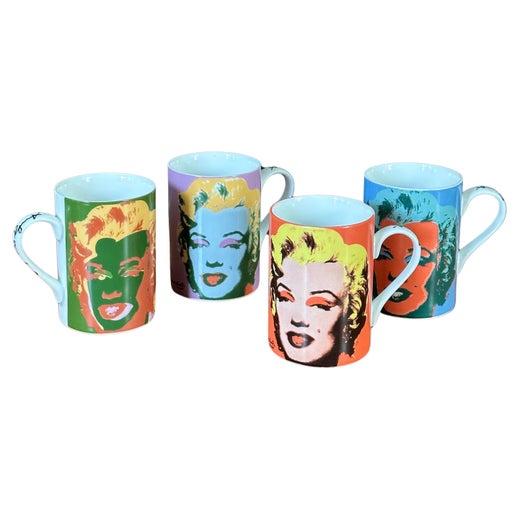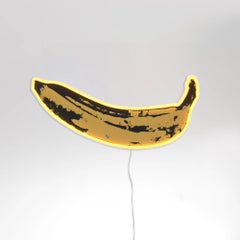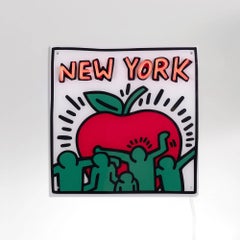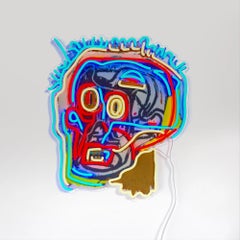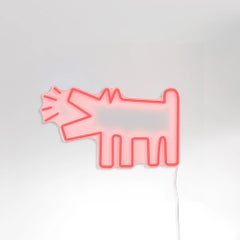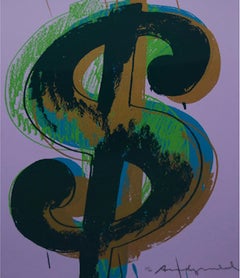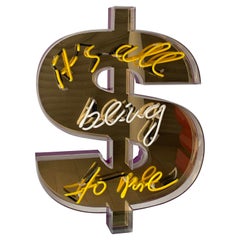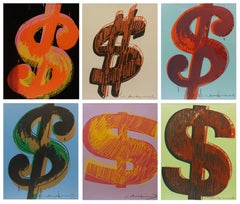Items Similar to ANDY WARHOL - Dollar Sign YP x Andy Warhol. Design Neon LED Lamp. Pop Art
Want more images or videos?
Request additional images or videos from the seller
1 of 4
(after) Andy WarholANDY WARHOL - Dollar Sign YP x Andy Warhol. Design Neon LED Lamp. Pop Art2024
2024
$450.68
$563.3520% Off
£338.73
£423.4120% Off
€380
€47520% Off
CA$624.42
CA$780.5320% Off
A$678.72
A$848.4020% Off
CHF 363.33
CHF 454.1620% Off
MX$8,204.18
MX$10,255.2220% Off
NOK 4,578.68
NOK 5,723.3520% Off
SEK 4,222.73
SEK 5,278.4120% Off
DKK 2,894.75
DKK 3,618.4420% Off
About the Item
Dollar Sign YP x Andy Warhol
Date of creation: 2024
Medium: PVC or Silicon piping with LED lights mounted on recycled acrylic board
Edition: Open
Size: 41 x 29 cm
Condition: Brand new
Andy Warhol's Dollar Sign is a colorful, graphic representation of the U.S. dollar sign, one of the most powerful icons of capitalist culture. Warhol created this series in 1981, at a time when he was already an established artist with a career deeply marked by the exploration of the themes of consumption, fame and wealth. Dollar Sign is a visual statement on the power of money and its omnipresence in modern society.
Dollar Sign is both a critique and a celebration of money. By depicting the dollar as an object of visual desire, Warhol points to the power of attraction that money exerts on people, while his vibrant and colorful style strips it of any obvious critical tone. The work invites the viewer to reflect on the role of money in society and how it influences our lives and aspirations.
Dollar Sign has come to symbolize both Andy Warhol and the Pop Art movement, which embraced consumer culture rather than rejecting it. Today, Dollar Sign is considered one of Warhol's most representative works and one of the works of art that best captures the spirit of late 20th century capitalism and consumer society.
The flexible LED tube is safe and environmentally friendly, too! Set the light to the time of day with adjustable brightness.
©/®/™ The Andy Warhol Foundation for the Visual Arts, Inc.
Each sign is made of a neon flex material, consisting of PVC or Silicon piping with LED lights, that is mounted on a recycled acrylic board. These materials allow to create realistic neon signs, with bright lights and intense color, while being more durable, affordable, and sustainable than traditional neon.
Sustainability is taken seriously thanks to its LED lights which consumes 6 times less energy than traditional lights, lasting up to 100,000 hours. These neon is crafted using recycled materials and 100% recycled packaging, including removing all useless plastic.
- Creator:(after) Andy Warhol (American)
- Creation Year:2024
- Dimensions:Height: 16.15 in (41 cm)Width: 11.42 in (29 cm)Depth: 1.58 in (4 cm)
- Medium:
- Movement & Style:
- Period:
- Condition:
- Gallery Location:Madrid, ES
- Reference Number:1stDibs: LU1033117084692
(after) Andy Warhol
Since 1960 American artist Andy Warhol (1928-1987) has been considered one of the most well known and controversial artists in American Pop Art, having becoming synonymous with Pop Art itself. His works explore the relationship between artistic expression, celebrity culture, and advertising that flourished by the 1960s, and span a variety of media, including painting, silkscreening, photography, film and sculpture. Warhol used common images of popular media that were executed with hardline realism, and were considered new and outrageous. Andy Warhol is considered to be the #1 top performing artists on the art market today, comprising a sizable chunk of the contemporary art market. Born and raised in Pittsburgh, Warhol initially pursued a successful career as a commercial illustrator. After exhibiting his work in several galleries in the late 1950s, he began to receive recognition as an influential and controversial artist. His New York studio, The Factory, became a well-known gathering place that brought together distinguished intellectuals, drag queens, playwrights, Bohemian street people, Hollywood celebrities, and wealthy patrons. He promoted a collection of personalities known as Warhol Superstars, and is credited with coining the widely used expression "15 minutes of fame."
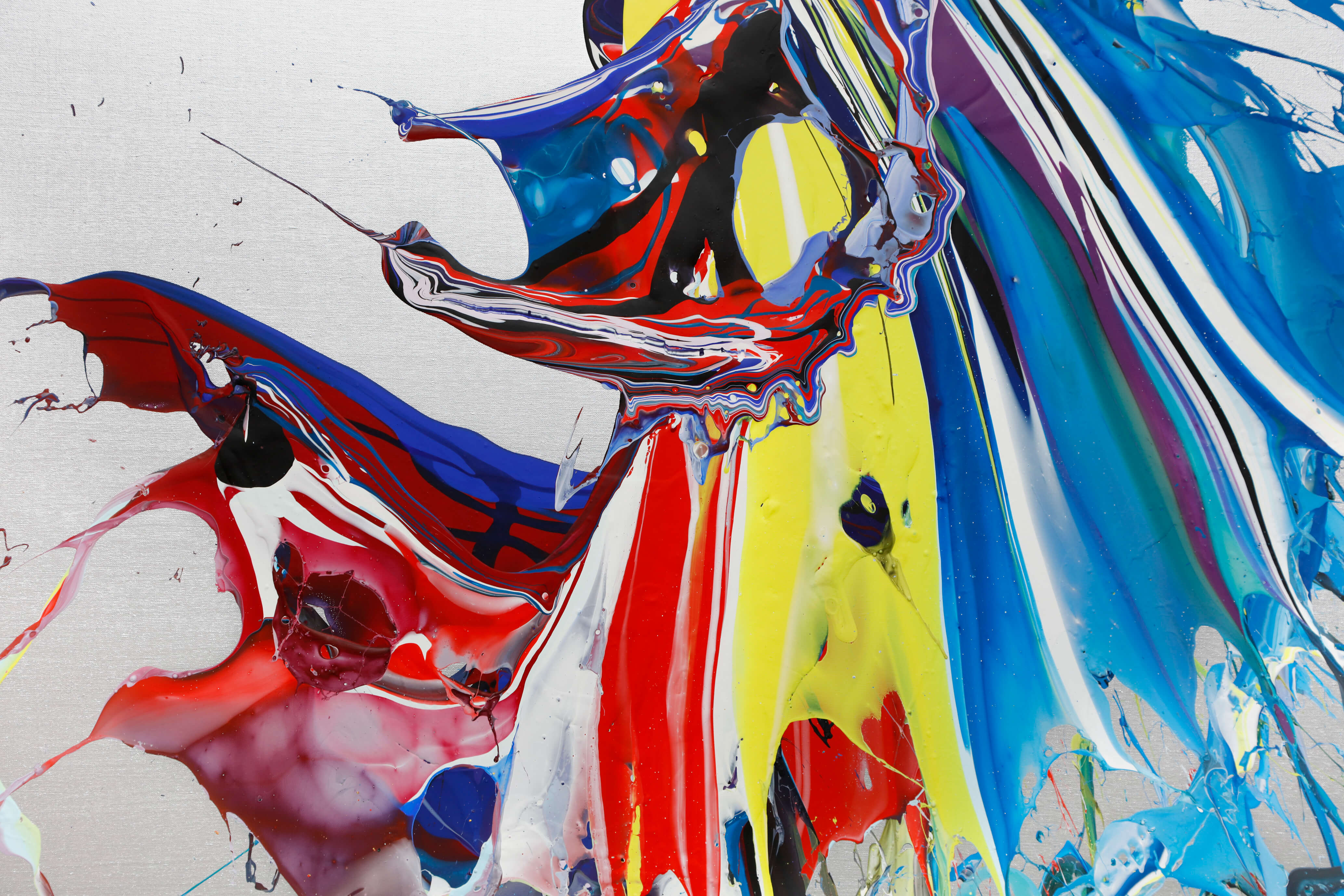
About the Seller
5.0
Gold Seller
Premium sellers maintaining a 4.3+ rating and 24-hour response times
Established in 2011
1stDibs seller since 2018
184 sales on 1stDibs
Typical response time: 6 hours
- ShippingRetrieving quote...Shipping from: Madrid, Spain
- Return Policy
More From This Seller
View AllANDY WARHOL - Banana YP x Andy Warhol. Design Neon LED Lamp. Pop Art, Wall
By Andy Warhol
Located in Madrid, Madrid
Banana YP x Andy Warhol
Date of creation: 2024
Medium: PVC or Silicon piping with LED lights mounted on recycled acrylic board
Edition: Open
Size: 62 x 26.5 cm
Condition: Brand new
...
Category
2010s Pop Art More Art
Materials
LED Light, Neon Light
$450 Sale Price
20% Off
KEITH HARING - New York YP x Keith Haring Design Neon LED Lamp. Pop Art
By (after) Keith Haring
Located in Madrid, Madrid
New York YP x Keith Haring
Date of creation: 2024
Medium: PVC or Silicon piping with LED lights mounted on recycled acrylic board
Edition: Open
Size: 52 x 52 cm
Condition: Brand new...
Category
2010s Pop Art More Art
Materials
LED Light, Neon Light
Jean-Michel BASQUIAT - Untitled (Head) YP x JM Basquiat Design Neon LED Lamp
By Jean-Michel Basquiat
Located in Madrid, Madrid
Untitled (Head) YP x JM Basquiat
Date of creation: 2024
Medium: PVC or Silicon piping with LED lights mounted on recycled acrylic board
Edition: Open
Size: 50 x 58 cm
Condition: Bra...
Category
2010s Pop Art More Art
Materials
LED Light, Neon Light
$1,375 Sale Price
20% Off
KEITH HARING - Barking Dog YP x Keith Haring Design Neon LED Lamp. Pop Art
By (after) Keith Haring
Located in Madrid, Madrid
Barking Dog YP x Keith Haring
Date of creation: 2024
Medium: PVC or Silicon piping with LED lights mounted on recycled acrylic board
Edition: Open
Size: 50 x 30 cm
Condition: Brand ...
Category
2010s Pop Art More Art
Materials
LED Light, Neon Light
Jean-Michel BASQUIAT - Banana YP x JM Basquiat Design Neon LED Lamp
By Jean-Michel Basquiat
Located in Madrid, Madrid
Banana YP x JM Basquiat
Date of creation: 2025
Medium: PVC or Silicon piping with LED lights mounted on recycled acrylic board
Edition: Open
Size: 41 x 50 cm
Condition: Brand new
Je...
Category
2010s Pop Art More Art
Materials
LED Light, Neon Light
KEITH HARING - Love People YP x Keith Haring Design Neon LED Lamp. Pop Art
By (after) Keith Haring
Located in Madrid, Madrid
Love People YP x Keith Haring
Date of creation: 2024
Medium: PVC or Silicon piping with LED lights mounted on recycled acrylic board
Edition: Open
Size: 52 x 52 cm
Condition: Brand ...
Category
2010s Pop Art More Art
Materials
LED Light, Neon Light
You May Also Like
$ Dollar Sign, FS II.277
By Andy Warhol
Located in Miami, FL
TECHNICAL INFORMATION:
Andy Warhol
Dollar Sign, FS II.277
1982
Screenprint on Lenox Museum Board
19 3/4 x 15 5/8 in.
48/60 - Each Piece is Unique
Pencil signed and numbered
Conditi...
Category
1980s Pop Art Still-life Prints
Materials
Screen
Price Upon Request
Maximilian Wiedemann, Sculpture Neon Lamp "it’s all bling to me", 2015
Located in Saint ouen, FR
Maximilian Wiedemann - sculpture neon lamp "It’s all bling to me" - 2015
Neon, metal and plexiglass
Measures: 95 x 72cm
Signé et numéroté sur 3...
Category
2010s European Post-Modern Contemporary Art
Materials
Metal
$ (Quadrant)
By Andy Warhol
Located in New York, NY
Created by Andy Warhol in 1982, $ (Quadrant) is a unique screenprint on Lenox Museum Board. Hand-signed and numbered in pencil from the edition of 60, the artwork measures 40 x 32 i...
Category
20th Century Pop Art More Prints
Materials
Screen
Price Upon Request
$ (1) FS II.274-279
By Andy Warhol
Located in Aventura, FL
The portfolio consists of six screen prints on Lenox museum board. Each hand-signed and numbered. Each print is unique. Printed by Rupert Jasen Smith, New York. Published by Andy War...
Category
1980s Pop Art Still-life Prints
Materials
Board, Screen
Original Vintage Advertising Poster Andy Warhol Dollar Pop Art Galerie Brachot
By Andy Warhol
Located in London, GB
Original vintage advertising poster for an Andy Warhol exhibition at the Galerie Isy Brachot in Brussels Belgium from 25 October to 9 December, featuring four dollar sign symbols in ...
Category
Vintage 1980s Belgian Posters
Materials
Paper
$ (QUADRANT) FS II.284
By Andy Warhol
Located in Aventura, FL
Hand signed and numbered by the artist. From the edition of 5/60 (there were also 10 artist's proofs). Unique screenprint on Lenox Museum Board. Printed by Rupert Jasen Smith, New ...
Category
1980s Pop Art Figurative Prints
Materials
Board, Screen
